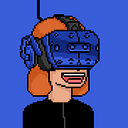The Painted Skulls of Hallstatt
In the town of Hallstatt there is an Ossuary called Beinhaus, or Bone House. Places of second burial were not uncommon in the Eastern Alps, but Hallstatt is special: It contains the most remarkable collections of painted skulls, anywhere.
The Beinhaus is located in the basement of the Church of Saint Michael, which stands high above the town since the 12th century. When you have little space for burials, Ossaries are the way to go.
The Hallstatt collection is unique in its kind, and it’s also a treasure trove for anthropologists who study heritability of cranial traits. What makes the skull collection an an ideal resource for genetic studies is that all the skulls are accompanied by fairly complete records of births, deaths and marriages that dates back to the 17th century.
The Bone House is a place of repose for some 700 painted skulls. Another 500 or so undecorated skulls occupy the corners, and underneath the shelves, neatly stacked like logs of firewood, are the large bones. Nearly all of the decorated skulls bear a Maltese Cross on their forehead, as well as a name and the year of their birth or death.
However, what really distinguishes these skulls is the rest of the decorations that were applied to them. Decorating the skulls was traditionally the job of the grave digger, who would paint garlands of flowers and roses for girls and wreaths of oak or ivy for men at the request of the family.
The skulls represent the entire communities through the ages.They are grouped by family, many of which still live in Hallstatt, and although the town is home to both Catholics and Protestants, member from both religions now they sit side by side in the Ossuary.
All images are CC and courtesy of Flickr Commons.
Original article first published in Visual Squirrels: http://www.visualsquirrels.net/science/history/the-painted-skulls-of-hallstatt/
